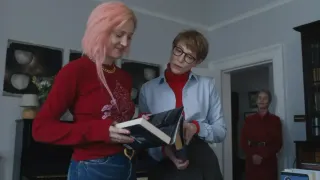October 26, 2022
Qatar's Emir Lashes Out at Criticism Ahead of FIFA World Cup
READ TIME: 2 MIN.
Qatar's ruling emir on Tuesday lashed out at criticism of his country over its hosting of the 2022 FIFA World Cup, describing it as an "unprecedented campaign" targeting the first Arab nation to hold the tournament.
Since winning hosting rights for the World Cup over a decade ago, Qatar has faced scrutiny and criticism for its treatment of migrant workers and the gay community, among other issues.
The alleged abuses affecting legions of low-paid laborers who power Qatar's economy and who built its gleaming World Cup stadiums have been a lighting rod for protest around the world, especially in Europe.
Qatar has repeatedly pushed back, insisting the country has improved protections for migrant workers and claiming the criticism is outdated.
In a televised speech before the emirate's legislative body on Tuesday, Sheikh Tamim bin Hamad Al Thani said Qatar "has been subjected to an unprecedented campaign that no host country has ever faced."
"The campaign tends to continue and expand to include fabrications and double standards that were so ferocious that it has unfortunately prompted many people to question the real reasons and motives," he said.
Rights groups have credited Qatar with improving its labor laws, such as by adopting a minimum monthly wage of around $275 a month in 2020, and for largely dismantling the "kafala" system that had prevented workers from changing jobs or leaving the country without the consent of their employers. However, activists call for more to be done.
In recent months pressure has also mounted on Qatar over its criminalization of homosexuality. Qatari law calls for a prison sentence of one to three years for adults convicted of consensual gay or lesbian sex. European soccer federations last month announced their intention for captains to wear an armband with a rainbow heart design as part of an anti-discrimination campaign during international matches.
Qatar has said all are welcome at the World Cup, including LGBTQ fans, but that visitors should respect the country's conservative culture, in which public displays of affection – even among heterosexuals – is taboo.
On Tuesday, a veteran U.K.-based activist held a one-man protest in front of Qatar's National Museum. Peter Tatchell, 70, held a sign accusing Qatar of jailing members of the LGBTQ community.
Organizers claimed he was arrested but later acknowledged that police had only briefly questioned him on the sidewalk.
Qatar denied he was arrested and said claims to the contrary are "completely false."
"An individual standing in a traffic roundabout was cordially and professionally asked to move to the sidewalk, no arrests were made," the government's communications office said in a statement.
In his speech, Sheikh Tamim promised the glaring spotlight of the world's biggest sporting event would also benefit Qatar.
"This is a great test for a country the size of Qatar that impresses the whole world with what it has already achieved and is achieving," he said.
The tournament starts on Nov. 20 and the final is set for Dec. 18.






